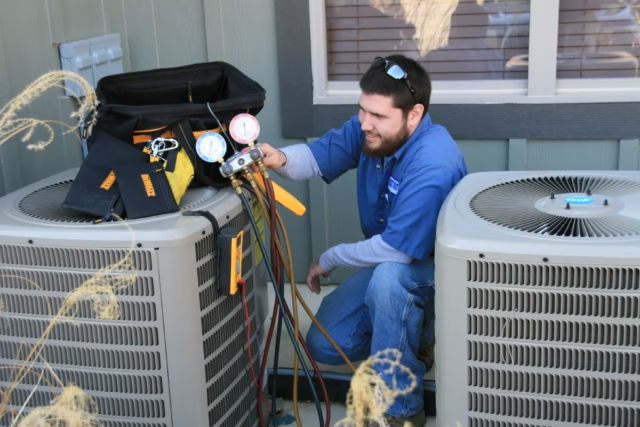Your home’s HVAC system keeps you comfortable year-round, but it’s also a complex network of components. From heating in the winter to cooling in the summer, every part plays a critical role. Many homeowners, however, are surprised to learn that some components are much more expensive to replace than others.
Understanding which part is the most costly can help you budget for repairs, prioritize maintenance, and make smart decisions when your system ages. In this article, we’ll focus on the most expensive HVAC parts and offer practical advice to protect your system.
Key Components of an HVAC System
Before we identify the priciest part, it helps to understand the main components of a central HVAC system:
- Compressor: Often called the “heart” of an air conditioner or heat pump, it circulates refrigerant through the system, moving heat in or out of your home.
- Condenser and Evaporator Coils: These are heat exchangers; the condenser releases heat outside, while the evaporator absorbs heat indoors.
- Blower Motor / Air Handler: This component moves air through the ductwork, distributing heating or cooling throughout the house.
- Heat Exchanger: Found in furnaces, it transfers heat from fuel combustion into the air inside your home.
- Thermostat and Electrical Controls: These smaller components manage the system but usually cost less to repair or replace.
Each of these components is important, but one clearly stands out in terms of replacement cost.
The Most Expensive HVAC Part
In most central HVAC systems, the compressor is the most expensive single component to replace. Here’s why:
- Central Role: The compressor is the engine that drives the cooling cycle. If it fails, the system cannot cool your home.
- Labour Intensive: Replacing a compressor involves handling refrigerant, disconnecting electrical components, and often removing the outdoor unit. Labour costs are significant.
- Part Cost: Compressors are specialized machines, and their price varies based on brand, size, and efficiency.
Depending on your system, replacing a compressor can range from $1,500 to $4,000, including labour. This makes it a major expense compared to other components like the blower motor or thermostat.
Other High-Cost Components
While the compressor is generally the priciest, some other components can also be costly if they fail:
- Evaporator or Condenser Coils: Replacement can be expensive because they are critical to heat transfer and require precise installation.
- Air Handler / Blower Motor: In larger homes or complex systems, replacing the indoor air handler can cost thousands due to labour and component costs.
- Heat Exchanger: A cracked heat exchanger in a gas furnace is not only expensive to replace but also a safety concern, often requiring immediate attention.
Being aware of these costs can help you take preventive action before a minor problem becomes a major expense.
Why Compressors Fail
Understanding why the compressor often fails can help prevent costly repairs:
- Dirty or Clogged Coils: Restrict airflow, causing the compressor to overheat.
- Low Refrigerant Levels: Forces the compressor to work harder, increasing wear.
- Electrical Issues: Power surges or faulty wiring can damage the compressor.
- Neglected Maintenance: Lack of regular service accelerates wear and tear.
The key takeaway is that many failures are preventable with proper care.
Preventive Measures to Avoid Large Repairs
Keeping your HVAC system in good condition reduces the risk of expensive repairs. Here are some tips:
- Regular Maintenance: Schedule yearly inspections and cleanings to ensure the system is operating efficiently.
- Clean Coils and Filters: Dirty coils or clogged filters make the compressor work harder, shortening its lifespan.
- Monitor Refrigerant Levels: Low refrigerant can overwork your compressor.
- Address Small Problems Early: Don’t ignore unusual noises or reduced efficiency; early intervention can prevent a major failure.
- Know Your System Age: Older systems may require more frequent inspections or preemptive replacement planning.
By following these steps, you can extend the life of the most expensive components and reduce the likelihood of large repair bills.
Professional HVAC Services in Your Area
If you want to ensure your system is properly maintained and avoid costly failures, it’s wise to consult a reliable service provider. For example, Coosa Climate Control Heating/Cooling has a strong reputation for thorough inspections, honest advice, and quality workmanship. Homeowners in Pell City, AL, looking for [HVAC Installation Services in Pell City, AL] can benefit from their experience to protect their investment and avoid unexpected repair costs.
Planning for Replacement Costs
Even with careful maintenance, compressors and other major components will eventually wear out. When this happens, weighing repair versus full system replacement is important. In some cases, replacing the entire system may be more cost-effective, especially if the HVAC system is over 10–15 years old.
A trusted service provider can help you evaluate the condition of your system, provide accurate cost estimates, and make recommendations tailored to your home. For those looking to plan ahead, contacting an experienced team like Coosa Climate Control Heating/Cooling ensures you get reliable guidance and skilled installation when the time comes.
Conclusion
The compressor is typically the most expensive part of an HVAC system due to its central role, complexity, and labour required for replacement. Other components, such as coils, heat exchangers, and air handlers, can also carry significant costs if neglected.
The best way to avoid these high costs is through regular maintenance, early detection of issues, and working with a reputable service provider. Companies like Coosa Climate Control Heating/Cooling provide expertise and reliable service that can help homeowners in Pell City, AL, protect their investment and avoid unexpected repair bills. By understanding which parts are most at risk, you can plan wisely and maintain year-round comfort in your home.



